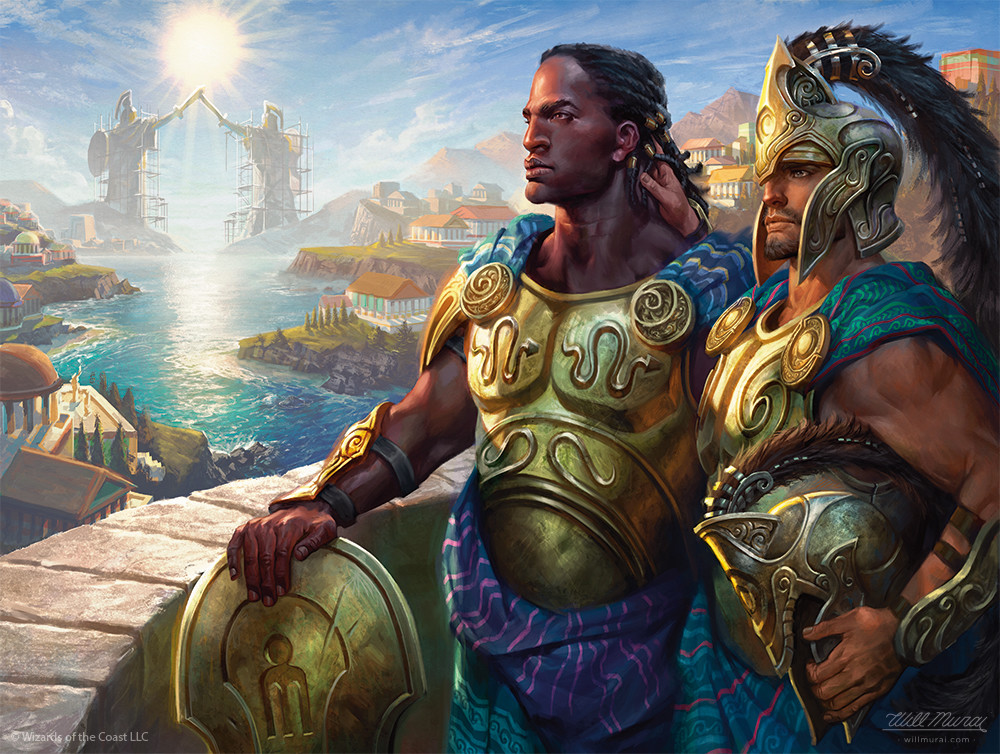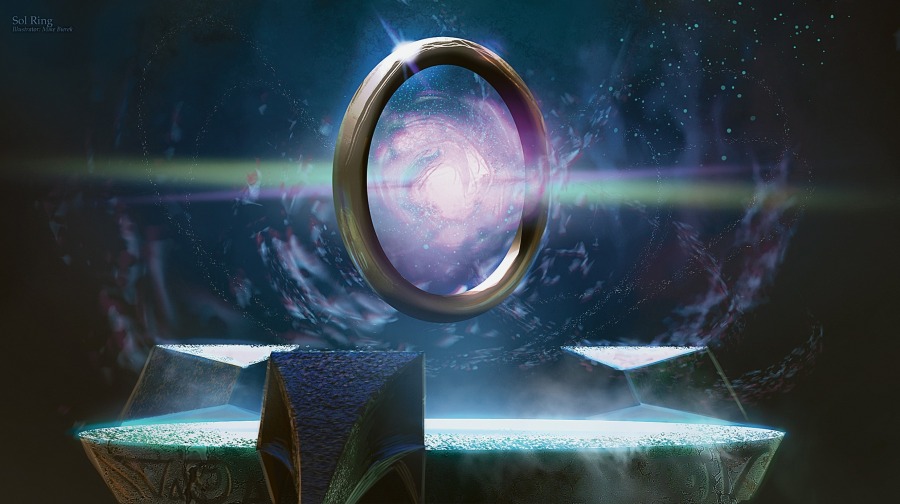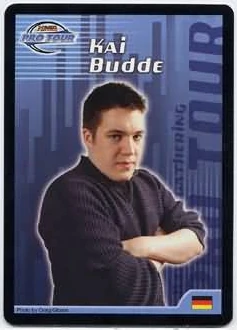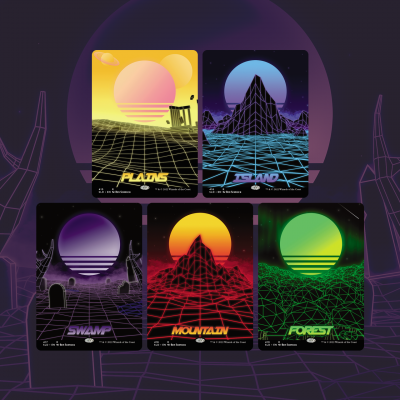In their very first collaboration, John Dale Beety of Star City Games and Donny Caltrider from Hipsters of the Coast explore the idea of Commander as “camp,” and exactly what that means for Magic: The Gathering’s fastest-growing and most popular format. Today on Hipsters of the Coast, John Dale explores the format’s history and seemingly parallel relationship with Susan Sontag’s 1964 essay Notes on “Camp.”
In 21st century Western popular culture, camp is nigh-unavoidable. Broadly speaking, “camp” is a way of seeing the world that celebrates the stylized, the odd, the over-the-top. Camp finds itself drawn to exuberance and spectacle, and tells the cult of authenticity “No thanks!” with a smile and a flourish. Camp sees a microphone studded with rhinestones and artificial flowers down the stand and thinks, “This’ll be fun.”
In 1964, American writer Susan Sontag broke through to popular success with her now-famous essay, Notes on “Camp”. In her Notes, she positioned “Camp” (always capitalized there) as a third approach to culture, after popular/mass culture and elevated/high/serious culture; a “good taste of bad taste” (Note 54), camp can find something to enjoy at the opera house or in a dollar store bargain bin of DVDs, so long as the work goes hard enough that there’s something to enjoy within it, even if the production as a whole doesn’t succeed.
“Commander is for fun. It’s a socially interactive, multiplayer Magic: the Gathering format full of wild interactions and epic plays, specifically designed as an alternative to tournament Magic.”—The Commander Rules Committee, “The Philosophy of Commander“
This same model applies, oddly enough, within Magic: The Gathering. If one substitutes “kitchen table Magic” for “mass culture” and “competitive Magic” for “serious culture,” then the self-consciously casual Commander emerges as Magic’s “camp.” Competitive Magic’s metrics for what makes a Magic card “good” simply don’t apply, and even the nominal goal of a Magic game, winning, matters less than the social experience.

Kynaios and Tiro of Meletis by Willian Murai.
Sontag’s “Notes” and model, moreover, hold parallels and lessons for Magic at a moment when Commander is Magic’s dominant maker-supported form. With this in mind, and the greatest possible debt to Sontag, here are some notes on Commander as “Camp.”
“Camp is esoteric—something of a private code, a badge of identity even, among small urban cliques.”—Susan Sontag, Notes on “Camp” (Introduction)
1. In 2020, Charlie Hall at Polygon published “Commander: The definitive history of Magic’s most popular format.” In the article, Hall traced Commander’s origins back to Fairbanks, Alaska in the mid-1990s, where Adam Staley, reacting to the already-emerging trend of competitive decks converging on a handful of common and powerful strategies, turned instead to Highlander, a singleton format with 100-card decks. (As Hall notes, “Highlander” was itself named for the 1986 fantasy film Highlander and its tagline, “There can be only one.” With its over-the-top nature and theme song by Queen, Highlander is itself an exemplar of camp.)
2. Adding the Elder Dragons of the Legends set made Elder Dragon Highlander, or EDH. Staley took EDH with him to Anchorage, Alaska, where Sheldon Menery first encountered EDH within Staley’s gaming circle in the early 2000s. [Disclaimer: John Dale Beety is an employee of Star City Games, and works with Menery, a freelance writer for the site.] It was Menery who took EDH from curiosity to classic. He not only refined EDH’s rules, he also introduced it to a Magic elite, his fellow Pro Tour-caliber Judges (Menery himself was Level 5, the highest level of the time), who craved a different experience after a long weekend of refereeing top-flight competitive Magic. And after a couple of years of EDH spreading among Judges, Menery gave EDH its own Notes on “Camp” moment when he wrote about it for Star City Games in 2004.
“One must distinguish between naïve and deliberate Camp. Pure Camp is always naïve.”—Susan Sontag, Notes on “Camp” (Note 18)
3. The next year, in 2005, Scott Larabee played his first game of EDH. This marked a key turning point in the format’s shift between pure and conscious “Magic camp.” Magic Judges, though key figures in professional Magic, were not Wizards of the Coast employees; Larabee was. His evangelism for EDH within the company that makes Magic brought it to corporate attention and then prominence.
4. EDH’s Rules Committee kicked off in 2006. Soon after, during the Great Recession, Wizards of the Coast began issuing a series of multiplayer products. After Planechase in 2009 and Archenemy in 2010, Wizards of the Coast announced that the 2011 product would be an old favorite, EDH, under a new name with no connections to 1980s cinema: Commander. For the first time, Wizards of the Coast would be printing cards specifically with an eye to Commander. The December 2, 2010 announcement was the beginning of Commander’s dominance within Magic: The Gathering—and the decisive end of Commander as pure Magic camp.
“Objects, being objects, don’t change when they are singled out by the Camp vision. Persons, however, respond to their audiences.”—Susan Sontag, Notes on “Camp” (Note 21)
5. When Alliances came out in 1996, Lord of Tresserhorn (general of the first EDH deck Larabee ever played) was not a “competitive” card. Someone’s favorite at the kitchen table, certainly, but hardly an icon of competitive Magic, not with Swords to Plowshares printed in the set immediately before it, Ice Age. As new Magic cards came out, even at kitchen tables Lord of Tresserhorn gave way to novel delights. It took a different approach to the game, the EDH approach, to give Lord of Tresserhorn renewed life as a beloved Magic card.
6. From the first dedicated Commander product in 2011, the difference between EDH favorites and the new Commander printings was obvious. Command Tower, with its explicit reference to a player’s commander, is the most blatant in its “camping,” though other cards such as Death by Dragons do so as well with their inherent politicking. Command Tower is also notable in that it is one of the best possible lands for any multicolor Commander deck, especially decks in three or more colors.
“Probably, intending to be campy is always harmful.”—Susan Sontag, Notes on “Camp” (Note 20)
7. The strength of Command Tower was of course deliberate. Wizards of the Coast exists to make profit; selling Magic: The Gathering cards is a means to that end. The most obvious route to making new Magic cards desirable is to make them better than past cards (the dreaded “power creep”), or else unique in their effects. In the earliest Commander-series sets, this included card designs that were superior not only for the Commander format but also for Legacy, where the cards were legal. Flusterstorm (2011) and True-Name Nemesis (2013) stick out here; Scavenging Ooze (2011) would, had it not subsequently joined Magic’s mainstream by its printing in Magic 2014.
8. These new printings drew remarks at the time, frequently critical. Steve Heisler, writing for The A.V. Club, keenly diagnosed the perceptions of Commander becoming over-optimized, increasingly dependent upon staple cards, and streamlined at the expense of deckbuilding creativity. The core of the conflict, however, is not between competitive play and Commander, but between pure and conscious Commander. A seemingly throwaway line near the end of Heisler’s article—”In a few years, maybe some Commander judges will stumble upon something else to do with their time off, and players who want a laid-back, social game will be able to enjoy it for a little while.”—shows how he reached the essence of the problem, despite never pinning it down fully.
“[T]hey want so badly to be campy that they’re continually losing the beat…”—Susan Sontag, Notes on “Camp” (Note 20)
9. Because Commander is as much a way of viewing Magic: The Gathering as of playing it—the Commander Rules Committee’s manifesto, “The Philosophy of Commander,” is ample proof—when a newly printed card is not in tune with Commander’s sensibility, it clangs. In October 2019, Gavin Verhey of Wizards of the Coast announced that 2020 would be the “Year of Commander,” a proclamation that the COVID-19 pandemic rendered truer than anyone would have wanted. Earlier that month, Throne of Eldraine released with the much-maligned Arcane Signet, a definitive speed-boosting “mana rock” that even Verhey later admitted was a mistake; 2020 brought Jeweled Lotus in Commander Legends, which drew calls for an emergency banning from Commander, and Lutri, the Spellchaser, which the Commander Rules Committee banned even before the release of its set, Ikoria: Lair of Behemoths.
10. “Commander as a way of viewing and playing Magic” also helps explain why no variant or rival of the Commander format has been able to unseat it. Attempts to make Commander competitive (1v1 Commander on Magic: The Gathering Online, for instance) do not fulfill the appeal of a noncompetitive and social multiplayer experience. Other tries at copying Commander’s form with different card sets have faltered similarly; Tiny Leaders excludes the high-mana-value cards that give Commander so much of its over-the-top appeal, while Brawl‘s original version using only Standard-legal cards stalled it from the start by cutting off any possibility of nostalgia.
“We are better able to enjoy a fantasy as fantasy when it is not our own. This is why so many of the objects prized by Camp taste are old-fashioned, out-of-date…”—Susan Sontag, Notes on “Camp” (Notes 30-31)
11. The original vision for Commander, as still maintained by its Rules Committee, admits a great deal of nostalgia. By taking cards lost to time and returning them to glory, Commander has a kinship with the non-rotating competitive Magic formats, especially Vintage and Legacy. As Commander has itself aged and its player pool grown, however, new ideas of what qualifies as “nostalgic” emerge. Already there are Commander Advisory Group members who had not begun playing Magic when the first Commander set came out. 2006’s Time Spiral set, flagrantly nostalgic at the time of its release, is closer in time to the original Magic set (Limited Edition Alpha) than the present.

Sol Ring by Mike Bierek.
12. The controversy over Sol Ring remaining legal in Commander is in part a battle of nostalgia. For players who remember Sol Ring’s meteoric time as part of early competitive Magic, it has a powerful nostalgic pull; and allowing it in Commander as a strong but not overpowering presence seems acceptable to many, including most crucially the Rules Committee. For others, especially those whose only experience with Sol Ring is within Commander itself, it comes across as an annoyance as deserving of a ban as other cards already on the banned list.
“Many examples of Camp are things which, from a ‘serious’ point of view, are either bad art or kitsch. Not all, though.”—Susan Sontag, Notes on “Camp” (Note 6)
13. Commander’s banned list itself is worth examining. The 86 cards on the list at the time of writing fall into four groups: the nine cards that use the ante mechanic, the seven cards Wizards of the Coast condemned as racist or culturally offensive in 2020, the 25 cards with the conspiracy card type, and a further 45 cards of the Commander Rules Committee’s choosing. The last group, the most interesting, contains cards ranging from Magic’s most powerful (eight of the Power Nine, with Timetwister notably excluded) to actively played Modern cards (Gifts Ungiven and Primeval Titan, the latter of which drew comment from Dave Lee’s Durdling Around comic) and absurdities that saw minimal one-on-one play but were just too much for a relaxed multiplayer format like Commander (Biorhythm, Trade Secrets).
14. Interestingly, the Commander Rules Committee positions its banned list, and indeed its whole rule set, “as a baseline” for smaller scenes to work from as they see fit. Commander leagues run by stores often have house rules and custom points systems; the latter also features on Commander VS by Star City Games. The Commander Rules Committee does, however, provide a steady ground for Commander fans to meet and play a game, regardless of their local scenes—so long as they can agree on power level.
“It’s embarrassing to be solemn and treatise-like about Camp.”—Susan Sontag, Notes on “Camp” (Introduction)
15. Attempts to quantify the power levels of various Commander decks began with good intentions, but have descended into the sort of absurdity normally seen at the subnational levels of minor political parties. A simple 1-10 scale fell victim to the “my deck is a 7” phenomenon, analogous to how the American working poor and McMansion-dwellers alike insist that they are “middle-class.” The ROAR scale, lasagna, peppers, power level being code for “budget” instead, backlash to the backlash. It is no wonder that Commander Rules Committee member Toby Elliott should find himself repeating, “Commander is a mindset, not a power level.”
16. Undergirding the power level debates is the increased connection between Commander communities. Early on, Commander was divided into small communities, usually “planted” at a local game store by a Magic Judge who had encountered it on the Pro Tour and brought it home. Commander content online and then Commander products led to increasing alignment between local Commander communities. Then came Commander as an experience alongside competitive events (the Commander Celebrations of Star City Games and the Command Zones of ChannelFireball, for instance), and the 2019 CommandFests dedicated near-exclusively to Commander. And when the COVID-19 pandemic shut down in-person Magic events, the April 2020 launch of VirtualEDH, later SpellTable, enabled international Magic play via webcam, with the noncompetitive (and thus largely unconcerned with gameplay integrity) Commander uniquely able to thrive among physical card (aka “paper”)-based Magic formats.
“The whole point of Camp is to dethrone the serious.”—Susan Sontag, Notes on “Camp” (Note 41)
17. Companies immediately recognized the potential of SpellTable to keep some part of paper Magic going during the pandemic. As recounted by David McCoy of Hipsters of the Coast, ChannelFireball used SpellTable to run CommandFest Online in June 2020, and Pastimes used it for Gen Con Online in July-August 2020. Just before CommandFest Online 2, SpellTable officially joined Wizards of the Coast on August 17, 2020, an uncommonly swift move that underscored just how important Wizards of the Coast perceived SpellTable to be in its efforts to keep organized paper Magic alive and sustain sales of physical Magic products.

Pro Player Card for Kai Budde.
18. The pandemic’s immediate crippling effects on organized paper Magic soon found themselves compounded by time. The 2020 Players Tour season moved online, but the 2020-2021 Players Tour season, played entirely online due to the aforementioned concerns about competitive integrity, did not thrive. In May 2021, Wizards of the Coast officially announced that it would discontinue the Magic Pro League and Rivals League after the 2021-2022 season. Future plans for top-level play remained uncertain for months, and trepidation lingered even after the March 31, 2022 announcement of the Pro Tour’s return. As Mike Sigrist stated on Twitter: “We were told and given permission to say that we should no longer consider Magic professionally moving forward.”
“What [Camp] does is to offer for art (and life) a different—a supplementary—set of standards.”—Susan Sontag, Notes on “Camp” (Note 34)
19. Sontag, writing in 1964, did not have to consider the problem of “Camp” as she described it displacing either mass culture or serious culture. Yet Commander, in the first quarter of 2022 and going into the second, found itself doing both. Not only had it become the dominant mode of paper Magic play as a format, as an annual product since 2013 it also largely had displaced Wizards of the Coast’s other paper multiplayer offerings. Planechase had two sets (2009, 2012) and an Anthology in 2016. Archenemy had two sets (2010, 2017). In Limited-oriented products, Battlebond (2018) is a one-off so far, with Commander Legends (2020) and Commander Legends: Battle for Baldur’s Gate (releasing June 2022) postdating it.
20. This two-pronged dominance, arising from necessity, is as unsustainable a trend as 1970s disco or 1990s grunge. Knowing that, of course, does not make things any easier on those responsible for Commander. Competitive paper players, feeling a blatantly signaled loss of status, look upon Commander with envious eyes; so too do those fans of multiplayer who do not find Commander to their taste. One is reminded of the utter dominance of excess in 1980s Western popular culture—The Phantom of the Opera, Scarface, The Bonfire of the Vanities, radio songs from “Super Freak” to “Love Shack” to “Under Pressure” – and, from there, how a different pandemic, HIV/AIDS, cut short the lives of many camp-attuned creators, including Queen frontman Freddie Mercury, in that decade and those to follow.
“The hallmark of Camp is the spirit of extravagance.”—Susan Sontag, Notes on “Camp” (Note 25)
21. The nature of mass culture is to use the past as a springboard, either through rejection (grunge and its emphasis on authenticity versus 1980s stylization, swiftly commodified as usual) or embrace (Lady Gaga with her 1980s-inspired name and sometimes music, “Blinding Lights” by The Weeknd, Dua Lipa‘s Future Nostalgia and the indebtedness of her “Physical” to the “Physical” of Olivia Newton-John). One could argue that Commander as a format, if not a philosophy, has gone through at least one camp-to-mass-culture cycle already, with the first Commander product of the early 2010s the mass culture to early-2000s Commander’s camp.

“Shades Not Included” Secret Lair synthwave basic lands.
22. This diffraction of “Commander” into “Commander-as-product,” “Commander-as-format,” and “Commander-as-spirit” is a wellspring of confusion, and of strength. There is an inherent tension between Commander-as-spirit’s delight in over-the-top cards of old and the profit drive that leads Wizards of the Coast to produce new Commander-as-product. On the other hand, even if Commander-as-format should fall past being a healthy part of multiplayer Magic and into irrelevancy, Commander-as-product will remain in the collections of engaged and kitchen table players alike, ready to be rediscovered and rekindle Commander-as-spirit in a new generation. Something of Commander will survive so long as something of Magic does.
“Camp taste is, above all, a mode of enjoyment, of appreciation—not judgment.”—Susan Sontag, Notes on “Camp” (Note 55)
23. Ultimately, the delight of Commander is the delight of the newcomer to Magic: Shivan Dragon soaring over the battlefield, Darksteel Colossus rumbling through, Mordenkainen redefining the limits of knowledge. True, it has taken a detour to seriousness and back; this sophistication is the constraint that says, as Ella Winter did to Thomas Wolfe, “Don’t you know you can’t go home again?”
24. Still, for as long as people who are serious about Magic seek something past competition, Magic “camp” will endure. It may be as Commander, or a revival of 60-card casual Constructed in the vein of Abe Sargent, or some manifestation of Cube (whose arguable status as the current “camp” of Limited Magic, as opposed to Commander as the “camp” of Constructed Magic, is outside the scope of these notes). It may be something entirely different, as yet undreamed. For all its flaws, for the moment, for many, Commander will do.
“Camp is a tender feeling.”—Susan Sontag, Notes on “Camp” (Note 56)
“You can’t camp about something you don’t take seriously.”—Christopher Isherwood, The World in the Evening
“The format can be broken; we believe games are more fun if you don’t.”—The Commander Rules Committee, “The Philosophy of Commander”
Next week on Star City Games, Donny will use some of these same tenets of Sontag alongside the art on the cards to explain just how to get ‘campy’ in your next Commander pod. Together, these two articles will present the core of Commander in an entirely new way, and illuminate our understanding of why Commander sits atop Magic’s proverbial mountain.

